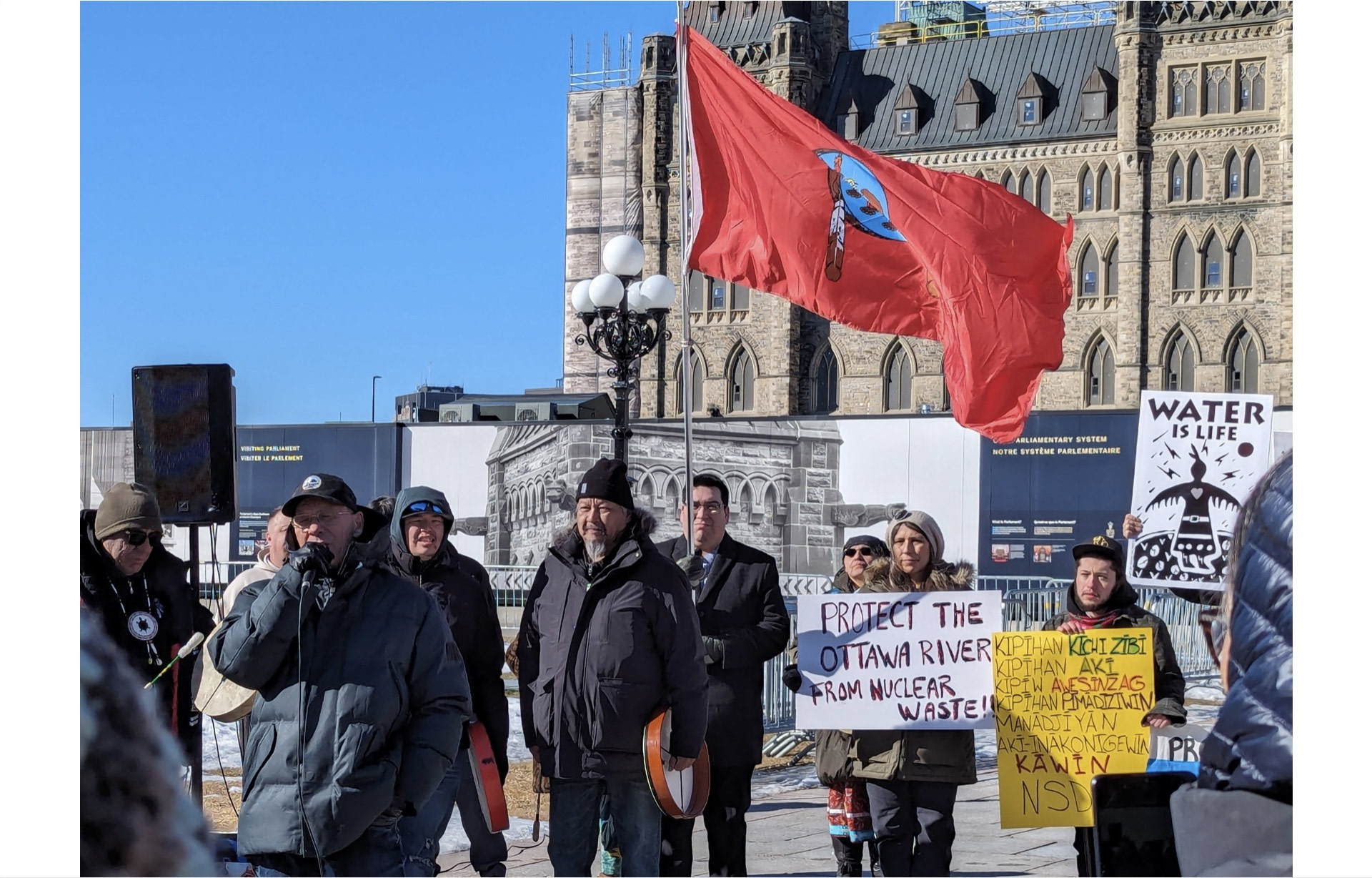Destruction of Endangered Species Court Challenge re Nuclear Site
Katharine Fletcher
The Canadian Nuclear Safety Commission’s (CNSC’s) January 7 licensing of an above-ground nuclear waste landfill at Chalk River triggered legal challenges.
The NSDF would hold one million tonnes of radioactive and other hazardous waste in an above-ground mound beside the Ottawa River, 180 km north-west of Ottawa on the Chalk River Laboratories property.
On February 14, Prime Minister Justin Trudeau dismissed Kebaowek First Nation and other organizations’ opposition to the NSDF. “We trust our experts,” he stated.
Dr. Ole Hendrickson is Chair, National Conservation Committee of the Sierra Club Canada Foundation and a long-time opponent of the Near Surface Disposal Facility (NSDF).
On March 27, an application for the judicial review of this decision was submitted to the Federal Court by legal counsel Nicholas Pope of Hameed Law on behalf of Kebaowek First Nation, Concerned Citizens of Renfrew County and Area, Canadian Coalition for Nuclear Responsibility, and Sierra Club Canada Foundation.
Hendrickson said “I’m hopeful this challenge will be successful.”
Hendrickson’s optimism is based upon Canada’s Species at Risk Act. It is illegal to destroy endangered species or their habitats without a permit, which must only be granted if the project’s proponent has carefully considered all possible alternatives and chosen the option with the least impact on endangered species.
Instead, the plaintiffs believe that the multinational consortium of SNC-Lavalin and two US-based engineering companies selected the site because of its convenience, disregarding the species at risk.
Hendrickson noted, “Our Canadian Minister of Environment and Climate Change, Steven Guilbeault, failed to uphold his duty to protect endangered species by issuing this permit. A key condition of granting a permit is that the proponent has looked at alternative sites and chosen the one with the least impact on endangered species. That clearly did not happen in this case. Given that CRL is a federally owned property, the Minister should set a good example and do his utmost to protect endangered species there.”
The Species at Risk website published the permit: “This permit authorizes the permit holder to carry out activities associated with the construction of an engineered near surface disposal facility for low-level radioactive waste at the Chalk River Laboratories (CRL) site in Ontario. Associated construction activities may result in the harm, harassment or killing individuals of the of Blanding’s Turtle (Emydoidea blandingii), Great Lakes / St. Lawrence population, and the damage or destruction of Little Brown Myotis (Myotis lucifugus) and Northern Myotis (Myotis septentrionalis) residences. The permit holder is also authorized to be in possession of Blanding’s Turtle as necessary for moving individuals out of harm’s way.” (species-registry.canada.ca/index-en.html#/permits/831-3)
Not only will Species at Risk be affected by this permit’s execution.
The Chalk River 3,700-hectare property has been a restricted site for 80 years and has seen minimal human activity. This site will be clearcut and extensive blasting permitted, to prepare the site for the NSDF.
Other recognized endangered species found here are the Canada Warbler and rare Golden-winged Warbler. In addition, there are three active bear dens, which are protected by provincial legislation, and evidence of extensive use of the site by endangered Eastern Wolves.
Both bears and wolves are species of great cultural importance to Algonquin peoples.
Photo caption: Chief Lance Haymond, Kebaowek First Nation addresses 125+ demonstrators on Parliament Hill, Ottawa.
Photo credit: Katharine Fletcher






